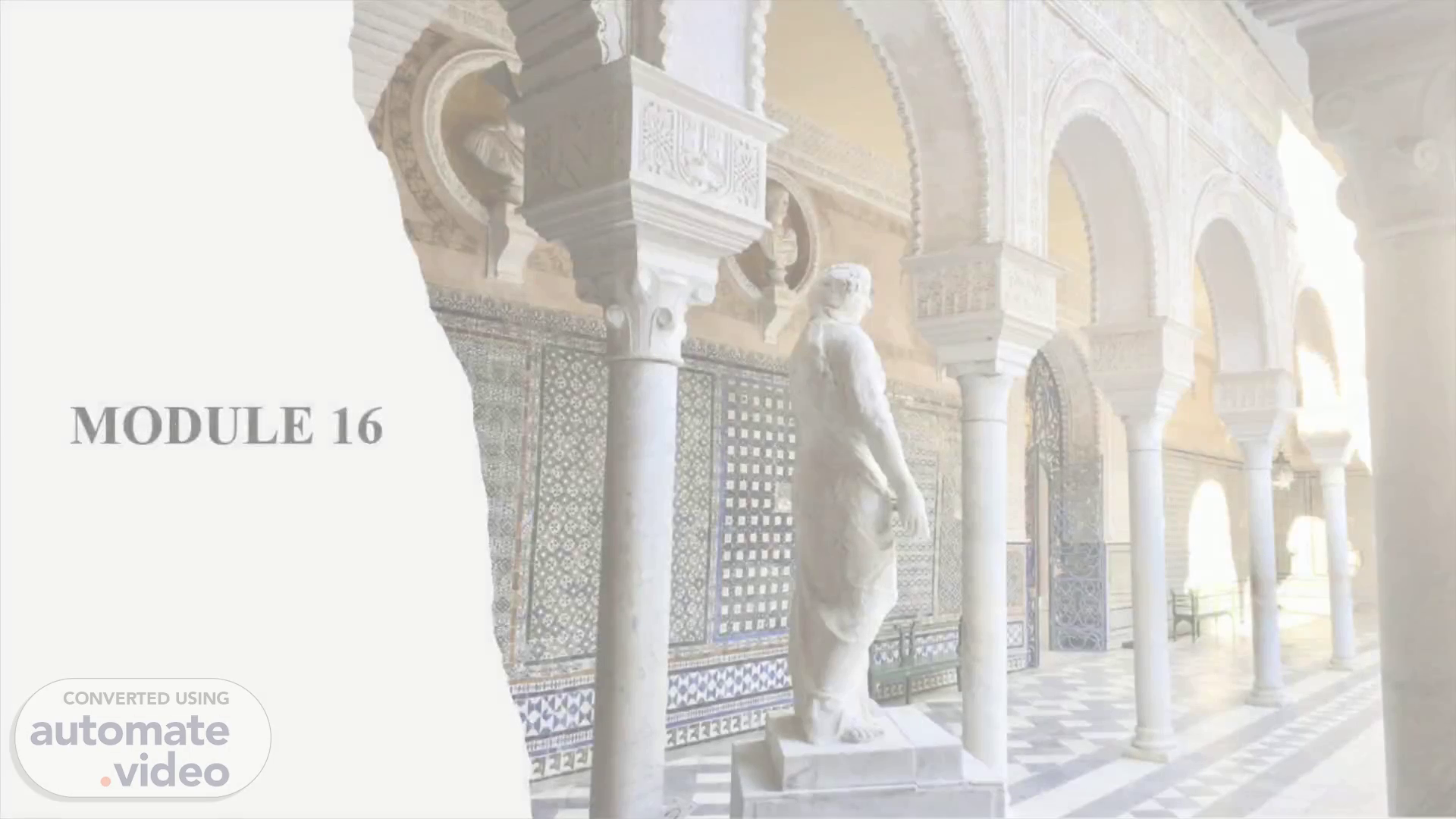
MODULE 16
Scene 1 (0s)
[Virtual Presenter] Hello Professor. A very good day to you. Here is my presentation on Mudejar Art and Architecture.
Scene 2 (12s)
[Audio] In unique, there was a complex interplay between Christianity and Islam during the medieval era in the Iberian Peninsula. The Mudéjar style was one of the most fascinating cultural phenomena to emerge at this time. The term 'Mudéjar', which means "those permitted to remain" in Arabic, refers to the Muslim population that remained in areas under Christian rule after the Reconquista. This distinctive cultural and artistic movement produced stunning architectural and artistic works that still enthrall and inspire people today because of the captivating fusion of Islamic and Christian influences..
Scene 3 (53s)
[Audio] Islamic geometric patterns, elaborate ornamentation, and architectural forms were combined with Christian structural principles by Mudéjar artisans and architects. In Mudéjar architecture, colorful ceramic tilework and stucco ornamentation are common. Mudéjar tiles vivid hues and intricate designs were reminiscent of those in Al-Andalus architecture. Moroccan artisans and craftspeople were known for their extraordinary talent in a variety of artistic mediums, such as intricate calligraphy, woodcarving, and tilework..
Scene 4 (1m 32s)
[Audio] ARCHITECTURAL INFLUENCE: Decorative tilework, horseshoe arches, intricate geometric patterns, and the use of brick and stucco are all features of Mudéjar architecture. ARTISTIC EXPRESSION: Mudéjar art included metalwork, ceramics, woodworking, and other artistic disciplines in addition to architecture..
Scene 5 (1m 57s)
[Audio] CULTURAL IDENTITY & HYBRIDITY: The fusion of elements from various traditions in the Mudéjar style is a singular example of cultural hybridity. It served as a visual illustration of the complex interactions between various religious and cultural communities by reflecting their coexistence. CROSSING BOUNDARIES: Despite changes in political boundaries and power structures, the Mudéjar style endured. As societal norms and architectural styles changed over time, it continued to change. This persistence shows how historical interactions continue to influence artistic expression today..
Scene 6 (2m 42s)
[Audio] Eventually, the connections between Moroccan Mudéjar culture, North African culture, and other regions show how cultural continuity can cross contemporary national boundaries. The artistic and architectural legacy of the Mudéjar culture is evidence of the historical interactions' enduring influence, influencing artistic expression and cultural identity across geographical and temporal boundaries. We are reminded of the interconnectedness of human civilizations and the transformative power of cross-cultural fertilization by this rich tapestry of cultural exchange. Despite shifting political boundaries and power structures, the Mudéjar style endured. As societal norms and architectural styles changed over time, it continued to change. This persistence shows how historical interactions continue to influence artistic expression today. Mudéjar culture's connections to North Africa and Morocco serve as an example of how cultural continuity can cross contemporary national boundaries. The artistic and architectural legacy of the Mudéjar culture is evidence of the historical interactions' enduring influence, influencing artistic expression and cultural identity across geographical and temporal boundaries. We are reminded of the interconnectedness of human civilizations and the transformative power of cross-cultural fertilization by this rich tapestry of cultural exchange..
Scene 7 (4m 16s)
[Audio] Thankyou.. WORKS CITED. https://www.jstor.org/action/doBasicSearch? Query=mudejar+art+and+architecture https://www.britannica.com/topic/Islamic-arts/Western-Islamic-art-Moorish.